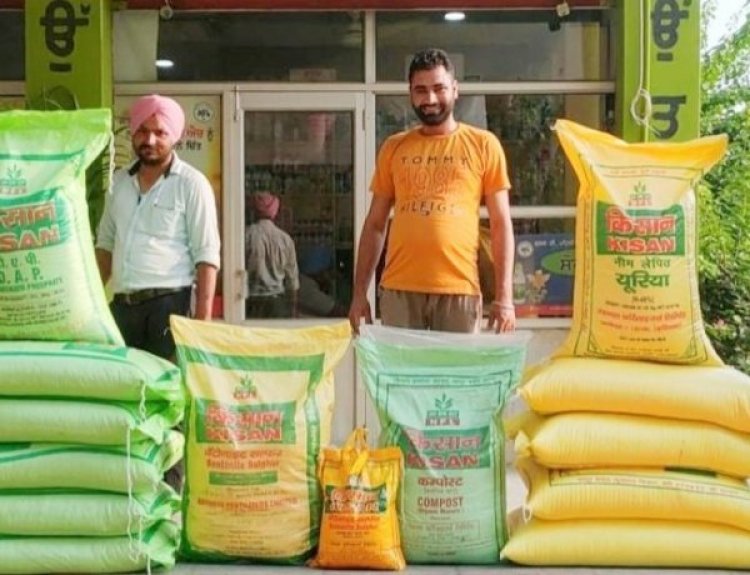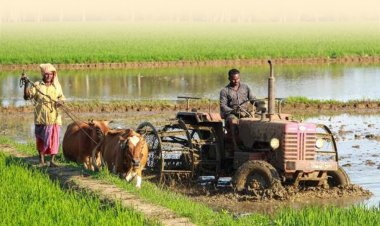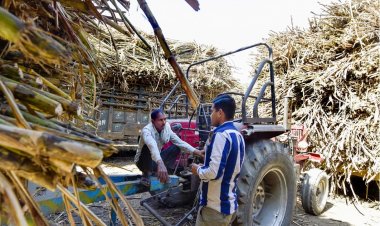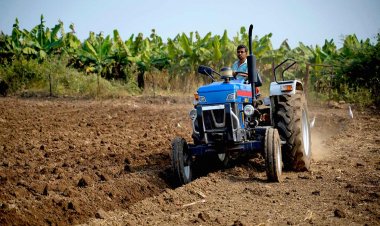War room of DoF working for right amount of fertilizer in right place at right time
This is the first time in the country when the DoF of the Ministry of Chemicals and Fertilisers is itself shouldering the responsibility of striking the balance between demand and supply at the district level through the IFMS. Until now, the practice was that the central government ensured the supply on the basis of the fertilizer demand of the states while it was the responsibility of the state governments to ensure the availability of fertilizers within the state. The 18.06 lt of DAP required for October has been made available to the states concerned through this strategy.

Amidst the crisis of Diammonium Phosphate (DAP) both within the country and at the global level, the war room of the Department of Fertilizers is working to ensure the supply of the right amount of fertilizer in the right place at the right time. The strategy of micro-management is being adopted on the basis of crops and districts through coordination with the state agriculture departments and the Railway Board.
This is the first time in the country when the Department of Fertilisers (DoF) of the Ministry of Chemicals and Fertilisers is itself shouldering the responsibility of striking the balance between demand and supply at the district level through the Integrated Fertilizer Movement System (IFMS). Until now, the practice was that the central government ensured the supply on the basis of the fertilizer demand of the states while it was the responsibility of the state governments to ensure the availability of fertilizers within the state.
The 18.06 lakh tonnes (lt) of DAP required for October has been made available to the states concerned through this strategy. This includes 15 lt of opening stock, 3 lt of production and 1 lt of imported DAP. Fertilizer companies are importing 6 lt of DAP, of which 4.5 lt has reached the ports and it is from this 4.5 lt that 1 lt of DAP has been sent to the states that had demanded it. The remaining 1.5 lt of DAP will also find its way to the country soon. This information was shared by a senior official of the DoF in an interview with RuralVoice.
In fact, according to the government figures, the stocks of DAP and Muriate of Potash (MOP) on September 30, 2021, was even less than half of those at the same time last year. When this led to a fertilizer availability crisis at several places in the country, the DoF took the reins in its hands. RuralVoice had done a detailed story regarding this on October 17.
Amidst the scarcity of DAP and other complex fertilizers, this strategy of the DoF seems to be working for fertilizer supply in the current Rabi season. Under the strategy, while the MoF is monitoring the movement of fertilizers round the clock, supply is being ensured at the district level as per crop requirements.
The official mentioned above said, “While 50 rail rakes were being used every day for fertilizer movement in the first few days of October, their number has now gone up to 55. Of these, 30 rakes are being used for DAP and other complex fertilizers and 25 for urea. This will go up to 60 rakes per day by the end of October.” The capacity of a rake ranges from 26,000 to 34,000 tonnes.
In fact, the state governments usually do not include the pre-positioning stock, i.e., the opening stock of the Rabi season, in the availability. But things are different this year. Given this situation, when the stock is there in the distribution channel, it is necessary to include it in availability. Also, there have been problems due to the absence of priorities being decided on the basis of where, at a given point of time, fertilizers are required for crops in various districts within the states. It was in these circumstances that the DoF itself decided to take responsibility on this front.
Citing it as an example of the attempts to bring the situation under control, the abovementioned official said, “Two rakes of 2,600 tonnes and 4,000 tonnes of DAP respectively were sent from the Mundra port of Gujarat to the Kanakpura Rake Point of Rajasthan on October 17. We had information that problems might arise in the mustard-producing states of Rajasthan — Ajmer, Tonk, Sawai Madhopur, Jaipur. Kanakpura is the rake point for these (districts). For this, rakes that were at No. 20 in the list were shifted upward in priority overnight. Their movement was speeded up in coordination with the Railway Board and there arose no problem in DAP reaching the Kanakpura Rake Point at the stipulated time. With the help of a dashboard, we are co-ordinating the consumption areas of each state as per the crop. For example, our first priority was to ensure DAP availability in the mustard- and potato-producing regions of Madhya Pradesh, Rajasthan, Uttar Pradesh (UP) and Punjab. And this we have accomplished.”
The official says that the movement of fertilizers is being monitored and planned with 2.8 lakh dealers, 940 rake points, 21 ports and 40 production plants in the country. Such planning is being done for the first time for the movement of fertilizers because it is necessary to keep their supply normal amidst their availability crisis in the global and domestic markets so that the Rabi season demand may be fulfilled. “Until now, the central government ensured fertilizer supply on the basis of the states’ monthly demand for the Rabi season. But things are not normal this year and so we are planning the supply in each district as per the crop and depending on when it is being sown. It is on this basis that we decided that fertilizer supply should be accorded priority in the potato- and mustard-producing regions in the month of October. In which the availability of DAP and NPK is being ensured at the rake points of the Rewari-Jhajjar-Palwal mustard-producing belt in Haryana and those of the potato-producing regions of Aligarh, Agra, Mainpuri, Etawah, Kannauj, Farrukhabad and Kanpur of UP.”
As per the official, the 18.08 lt of DAP demand has been fulfilled. Says he, “As per our figures, states had a pre-positioning of 15 lt. Three lakh tonnes of DAP was produced in the country. Which was sent to the states. And 4.5 lt out of the 6 lt import deals have reached the ports, out of which 1 lt has been sent to the states. The remaining 1.5 lt of the quantity being imported will also reach the country soon.” The official says that there is no problem with the overall availability of DAP and other complex fertilizers in the Rabi season. “Maybe some problem arose in some of the regions of consumption.” He says that DAP is required only for mustard and potato in October and that this has been fulfilled. “Our focus is now on making DAP available for wheat.”
|
Estimated demand of DAP and other complex fertilizers in Rabi 2021-22 |
||
|
Month |
DAP |
NPK/NP |
|
October |
18.08 |
12.86 |
|
November |
17.13 |
12.26 |
|
December |
9.48 |
11.09 |
|
January |
5.46 |
9.93 |
|
February |
4.06 |
7.86 |
|
March |
4.47 |
6.84 |
|
Total |
58.68 |
60.84 |
According to the DoF, 58.68 lt of DAP is required from October to March 2022 for the current Rabi season (2021-22). Of this, 17.13 lt of DAP is required for November. There are demand estimates of 9.48 lt of DAP in December, 5.46 lt in January, 4.06 lt in February and 4.47 lt for March. Besides, demand for NP and NPK complex fertilizers of various grades of Nitrogen (N), Phosphorus (P), Potash (K) and Sulphur (S) is estimated at 60.84 lt from October to march in the current Rabi season. Of this, 12.86 lt of complex fertilizers is required in October, 12.26 lt in November, 11.09 lt in December, 9.93 lt in January, 7.86 lt in February and 6.84 lt in March.
Denying that there was a shortage of DAP in Punjab, the official said, “Retailers have 1.2 lt of DAP there. Potato is produced in the Doaba belt of Jalandhar, Kapurthala and Hoshiarpur and DAP has been made available for its requirement. We have sent 35 rakes of DAP there only recently. 15 more rakes of DAP will reach Punjab in another week. Which is enough for its wheat requirements.”



 Join the RuralVoice whatsapp group
Join the RuralVoice whatsapp group








































